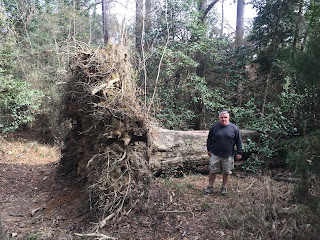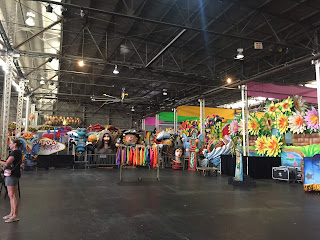Heading to Beaumont, Texas today
We will be in Texas until late February
Michael arrived for a long weekend and some warm weather. He was in charge of the Uber transportation from our RV campground on Lake Pontchartrain to downtown NOLA. Our first stop: Louis Armstrong Park.
I thought this jazz sculpture was cool. Wait a second, who is that guy on the end?
There is so much to see in the French Quarter also known as Vieux Carre (old square), we decided to use the Battle of New Orleans as a backdrop to seeing the sights.
Where to start? Jackson Park, of course! Andrew Jackson and a small group of American defenders overwhelmed British Troops in the Battle of New Orleans. The Americans included state militias, Cherokee Indians and Jean Lafitte's pirates. Andrew Jackson returned 25 years after the Battle to the Place d'Armes to lay the cornerstone at the park that would eventually bear his name.
Below is a sculpture of Jackson on his horse representing the review of troops before the battle began. You can also see the Cathedral of St. Louis King of France in the background. It is the oldest Catholic Cathedral in continual use in the United States and the building dates back to 1794. After victory over the troops, Jackson requested a thanksgiving service, and a solemn Mass was offered.
At this point we needed some refreshments. On to Cafe du Monde for some sustenance. Love those beignets!

We then left for Pirate's Alley where we learned that Jean Lafitte's (leader of the pirates) brother was held in a prison here before he escaped to help Jackson defeat the British. We stopped in for some Pirate's Punch, Calico Jack, and Absinthe cocktails.
On our way to the the next stop, we saw a band walking down the middle of the street.
Turns out it was a wedding! How fun!
We finally arrived at Maspero's Coffee House. In the pic below, our noble tour guide was reading from his phone to tell us that Jackson planned the defense of New Orleans with the Lafitte brothers in an upstairs room at this location in late 1814.
The next stop is the Old Absinthe House. This location also claims that the Battle of New Orleans was planned at their location. In 1951, a judge proclaimed that both locations, Old Absinthe House and Maspero's Coffee House, could lay claim to the legend.
Oh, and another random band in the French Quarter. There were several as we walked the Quarter from one historic place to another.
We were too far down Bourbon Street to go back and find the Old Absinthe House, so we moved to the next site:
Legend says that the Lafitte brothers used the blacksmith business as a "front" to sell slaves and goods that they plundered on the high seas. Both brothers and their privateers helped the Americans at the Battle of New Orleans in exchange for promises of amnesty for past offenses. The location has been a bar for many years now. Cheers!
Finally, we stopped at the Old Ursuline Convent. It was under construction and so a picture was not in order. The night before the battle was to start, the sisters prayed for victory for the Americans. Once the battle was over, the sisters cared for the sick and wounded from both sides. Jackson and his staff stopped by the convent to thank the sisters for their prayers. Every year a Mass of Thanksgiving is said on January 8, the anniversary of the Battle of New Orleans.
We also decided not to tour the final stop on this self guided walk given that it was just outside the French Quarter. The site is currently a US Mint but was formerly Fort Charles, where Jackson reviewed the troops and began the march to surprise attack the British.
So, the touring was over and we were ready to enjoy some fun on Bourbon Street!
After a traditional dinner of Muffuletta and gumbo, we stopped to listen to some zydeco music, complete with washboard and spoons (far left hand side).
The next morning we were ready for the hair of the dog...
Best Bloody Mary's in New Orleans!

















































